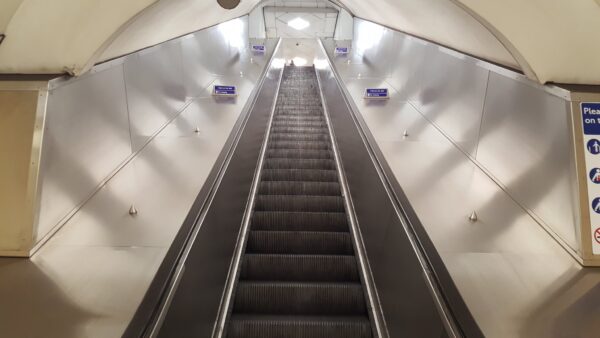Transport for London (TfL) has revealed that it earned more than £150 million in 2017/18 from advertising across its network – a rise of £10 million on the previous year.
In 2017/2018, more than 16,000 advertisements ran on the TfL network, generating approximately £152m – £10m more than the £142m raised in 2016/2017. TfL’s advertising estate accounts for 20 percent of the UK’s, and 40 percent of London’s, outdoor advertising by value.
TfL has introduced 260 new full-motion screens across the London Underground network and 60 full-motion ‘cross platform’ screens.
The start of 2019 has also seen the first advertising campaigns going live on new digital ‘ribbons’ at Tottenham Court Road, Piccadilly Circus and King’s Cross St. Pancras Tube stations. Each consists of several aligned digital screens alongside escalators enabling an advertising campaign to seamlessly flow along the length of the escalator.
With fares frozen and a declining government grant, TfL is looking to earn more money from more advertising.
While the amount of advertising on the Underground is a pale shadow of how much used to be there, it’s still leading to changes in the environment on public transport, with more space given to commercial space.
That results in more money to be pumped back into the transport network, which is good for the physical delivery of the service, but if the quid-pro-quo for a more reliable journey is being suffused with advertising, is that a price people are willing to pay?
What would be the impact on TfL’s income if, for example, the advertising space on the network were halved? It’s unlikely to be a halving of the revenue, as fewer adverts should command a higher value per viewer impact.
Let’s say though that it was to be nearly halved in revenue — so that TfL was to earn just £80 million from adverts on the network. Although TfL’s income in 2017/18 came to £10.2 billion, just £4.8 billion of that came from passenger fares, and that’s what would have to be affected if the public were willing to pay more for travel in exchange for fewer adverts.
The shortfall would be equivalent to 1.5% of fares income – or less than what would have once been the annual fares increase.
So, would you be willing to pay, say an extra £20 a year to halve the number of adverts on the tube?










I wonder how much it costs to generate this revenue, and what is the cost of installing all the various bits of media.
I have no evidence, but I suspect that the cost of installing things like the “digital ribbon” is borne by Exterion Media, the sole provider to TfL, and that TfL is effectively just renting their real estate to Exterion.
I found it immensely annoying that in the middle of the Christmas rush in December they started to install those screens in the first photo on the escalators at Tottenham Court Road, which meant closing one escalator at a time for X days/weeks, causing serious overcrowding both above and below ground. They had every opportunity to do in when the station was being rebuilt, or at least they should have done it overnight.
I’m fine with advertising but it shouldn’t inconvenience paying passengers, especially at the busiest time of year!
I suppose the companies pay for the adverts think that it works well otherwise no one would do it. I dont tend to pay much notice to adverts and cannot recall the last time one made me rush out and buy it!
It annoys me at Waterloo where platform info is displayed on ancient orange LED matrix displays which often don’t have enough lines for a service’s full timetable. Meanwhile, there is twice as much full colour screen real estate dedicated to advertising. It might cost a few percent more, but I bet a few percent less passengers would miss their train if the better screen was put to better use.
Personally, I quite like the old DMIs. Also, I’m sure they have been replaced on both the Bakerloo and Northern line platforms. There is no need to show the service’s “full timetable” as, unlike the NR, the service on the Tube is really only “come and go”: there are not any special stopping patterns (except on the Met) and therefore there isn’t a necessity to display the stations the train is going to stop at on the boards.
Whilst I personally would be happy to pay a bit more to have less ads, overall I’d rather that more people use public transport and less use private cars and minicabs. Price is a factor in this and so tube fares should ideally be going down (at least in real terms) not up.
The ideal would be less advertising and lower fares, with the extra funds coming from income related taxation. Sadly that’s not too likely right now.
Transport for London should spend more money on improving stations across London that tube stations and railway stations that aren’t step free should become step free accessible. Either with ramps or lifts.